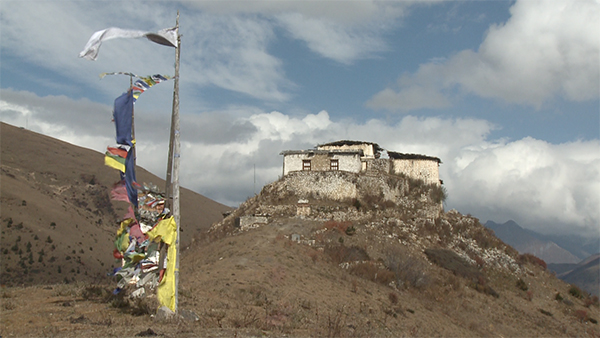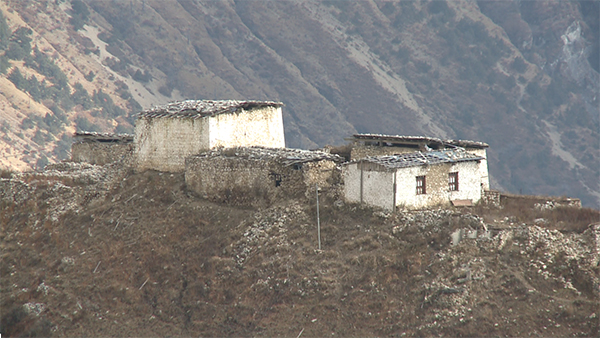 Lingzhi dzong, once an important frontier dzong in the country’s north, built sometime in between 1667 to 1680, has now fallen into ruins.
Lingzhi dzong, once an important frontier dzong in the country’s north, built sometime in between 1667 to 1680, has now fallen into ruins.
Perched on a hill overlooking Lingzhi valley, the dzong looks magnificent from a distance. But a closer look reveals its dilapidated state.
Built during the reign of third Druk Desi Minjur Tenpa, the centuries-old dzong used to house the dungkhag’s administration and monastic body back in its glory days.
But by the year 2000, the once splendid fortress, also known as the Lingzhi Yugyal Dzong, which translates to the Dzong of the Victorious Region, started giving in to age and damage inflicted by the harsh weather conditions up in the mountains.
The September 2011 earthquake caused further damage, prompting relocation of both the dungkhag office and the monastic body. The nangtens or the relics have since been housed in the dungkhag BHU, while the monk body moved to Barshong in Naro Gewog.
Today, the walls of the dzong can be seen falling into pieces, while the roof is almost non-existent. However, before the dzong falls into complete ruins, authorities are planning to restore it to its former glory. If everything goes as planned, the restoration of the dzong will take place in the 12th Five Year Plan.
The people in the dungkhag have waited to see the dzong renovated. Apart from historical significance, the dzong holds important cultural and spiritual significance for the locals. It is not just the seat of their administrator but also an important place of worship. “After the dzong got damaged, we have been left without a place to worship and make offerings,” said Chimi Dorji from Lingzhi.
“It’s very hard to find monks to perform rituals,” said Samten, another villager. “This was not a problem before when the monastic body was based in the dzong.”
The people also fear that storing relics at the BHU could amount to its desecration. “Hospital is a place where births and deaths happen, so it is not really a good place to house the sacred nangtens,” said Dawa Tshering, who is the dzong Kangjup.
This, the villagers believe, is bringing ill luck, disease and conflicts in their community. “The human-wildlife conflict could also be because of that,” said Chimi Dorji.
Kangjup Dawa Tshering says that their community has been afflicted with social ills and illnesses that were unheard of in the past.
“Most people say that wild animals are appearing because of our failure to protect the sanctity of the relics, which is annoying the local deities,” said Dechen Tshomo. “Moreover, we have no place to make offerings during auspicious days.”
While the Department of Culture says the Lingzhi dzong renovation project is among the department’s top three major projects identified for the next five year plan, the local leaders are doubtful. “We don’t know if things would go as planned,” said Mangmi Tenzin Zangpo.
“The dzong was damaged during the earlier government’s time and the authorities came here to take a look but nothing has happened after that. What if the history repeats?” asked the Mangmi.
The Department of Culture on the other hand says the government has renovated the dzong several times since the 9th Five Year Plan but the works could not be carried out successfully due to the challenges in transporting construction materials.
The Head of the Division for Conservation of Heritage Sites said the government is aware and concerned over the dzong’s situation and that Nu 5 m was allocated in the 11th Five Year Plan to mobilize construction materials and to set up required facilities at the base where the materials are to be collected.
She added the government is also looking for a grant from outside, which is likely to come through soon.









